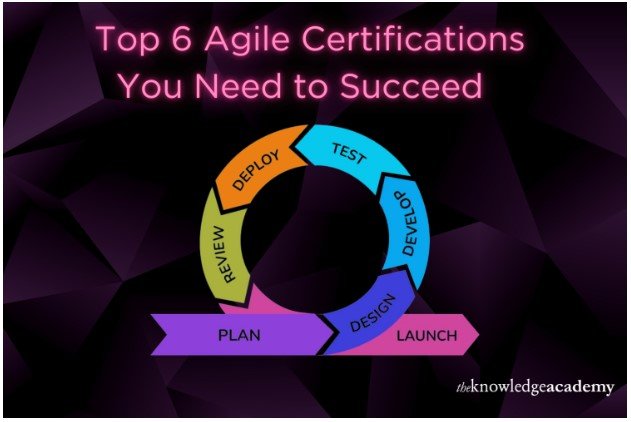Problem-solving is one of the most valuable skills in today’s fast-paced world. Whether you’re at work, dealing with personal challenges, or making decisions in daily life, strong problem-solving abilities can help you find solutions more quickly and effectively. However, many believe honing these skills takes years of experience and training. The truth is, with the right techniques, you can boost your problem-solving abilities in just minutes. At Pondershort.com, we focus on quick, actionable insights to help you improve your critical thinking and decision-making.
This article will explore how you can sharpen your problem-solving abilities quickly.
Why Problem-Solving Skills Matter
Problem-solving is more than finding answers—it’s about developing a mindset that helps you approach challenges methodically and calmly. Having strong problem-solving skills:
- Enhances decision-making: You can weigh options faster and choose the best action.
- Improves productivity: Solving problems efficiently allows you to focus on other tasks.
- Reduces stress: Knowing you can handle challenges minimizes the anxiety that comes with uncertainty.
- Boosts creativity: Often, the best solutions come from thinking outside the box.
Whether dealing with a minor issue or a complex dilemma, improving your ability to solve problems quickly can lead to better outcomes and less frustration.
Key Problem-Solving Techniques to Implement Right Away
Define the Problem Clearly
Before diving into solutions, it’s important to understand your problem. Many people rush to solve problems without fully grasping the situation. Take a moment to define the problem clearly. Ask yourself:
- What is the issue?
- Who is affected?
- Why does this problem exist?
When you understand the root cause of a problem, you’re better positioned to find lasting solutions.
Example:
Imagine you’re working on a project and suddenly have a delay. Instead of panicking, take a moment to identify the real issue. Is it a technical problem? A need for more resources? Once you know the core problem, you can start addressing it effectively.
Break the Problem into Smaller Steps
Break a problem into smaller, more manageable parts when it feels overwhelming. This approach, often called “chunking,” allows you to tackle each piece individually without feeling overwhelmed.
Steps to follow:
- List the elements of the problem.
- Prioritize tasks according to their impact or urgency.
- Solve one part at a time and reassess your progress.
Addressing smaller steps makes the problem more manageable, and you can progress without getting stuck.
Use the “5 Whys” Technique
The “5 Whys” technique is a powerful tool for identifying the root cause of a problem. Start by asking why the problem occurred, and for each answer, ask “why” again. Repeat this process five times or until you reach the fundamental cause.
Example:
Let’s say your team still needs to complete a project deadline.
- Why did we miss the deadline?
- Because the team needed to complete the final review on time.
- Why didn’t the final review happen on time?
- Because the files weren’t ready for review.
- Why weren’t the files ready?
- Because the data collection was delayed.
- Why was the data collection delayed?
- Because there was a miscommunication about the timeline.
- Why did the miscommunication happen?
- Because the timeline wasn’t shared with the team.
Now that you’ve identified the root cause—lack of communication—you can implement better communication strategies.
Brainstorm Multiple Solutions
Once you’ve defined the problem and its root cause, brainstorm possible solutions. Even if some ideas seem unrealistic, this step opens the door to creative problem-solving. Write down every solution that comes to mind, no matter how unconventional.
Tip: In a group setting, encourage everyone to share ideas without fear of judgment. Innovative solutions often come from brainstorming sessions where people feel comfortable expressing ideas.
Evaluate and Implement the Best Solution
After brainstorming:
- Evaluate each solution based on factors like feasibility, time, and Cost.
- Once you’ve chosen the most effective solution, put it into action.
- Monitor the results, and if the problem persists, be ready to pivot and try a different approach.
Pro Tip: In urgent situations, use a quick decision matrix to weigh the pros and cons of each solution.
Common Pitfalls to Avoid in Problem-Solving
Acting Without Thinking
It’s tempting to jump straight to a solution, especially when the pressure is high. However, rushing through problem-solving can result in overlooking key details, leading to short-term fixes that must address the core issue.
Ignoring Alternative Solutions
Be careful to avoid getting fixated on a single solution. Sometimes, the first idea that comes to mind could be better. Keep an open mind and explore different angles before settling on the final plan.
Giving Up Too Soon
Problem-solving can sometimes be frustrating, especially when looking for immediate results. However, persistence is key. If one solution doesn’t work, evaluate what went wrong and try a different approach.
The Role of Creativity in Problem-Solving
Creativity plays a critical role in effective problem-solving. When faced with a tough challenge, thinking creatively allows you to explore solutions that aren’t immediately obvious. Some strategies to boost creativity in problem-solving include:
- Alter your surroundings: Occasionally, a new location might inspire new thoughts.
- Look at the problem differently: How would someone else approach it?
- Take a break: Step away from the problem for a few minutes to clear your mind, then return with a fresh outlook.
By incorporating creativity into your problem-solving process, you may discover innovative and effective solutions.
FAQs About Problem-Solving
How can I improve my problem-solving skills quickly?
You can improve your problem-solving skills by practicing techniques like breaking problems into smaller steps, using the “5 Whys” method, and brainstorming multiple solutions. Focus on defining the problem clearly before jumping into solutions.
What are the most common barriers to effective problem-solving?
Common barriers include the need for clarity, rushing to conclusions, and ignoring alternative solutions. Staying calm, patient, and open-minded helps to overcome these challenges.
Why is creativity important in problem-solving?
Creativity lets you approach problems from different angles and think outside the box. This often leads to more innovative and effective solutions you may not have considered otherwise.
Can problem-solving skills be learned, or are they innate?
Problem-solving skills can be learned and improved over time. Anyone can enhance their problem-solving abilities by practicing techniques and building critical thinking habits.
How do I manage stress during the problem-solving process?
To manage stress, take a deep breath and focus on breaking the problem into manageable steps. Remember, it’s okay if the first solution doesn’t work—problem-solving is often a trial-and-error process.
How does problem-solving help in everyday life?
Problem-solving is essential in everyday life because it helps you make better decisions, handle unexpected challenges, and improve productivity. It reduces stress by giving you the confidence to handle whatever comes your way.
Conclusion
Boosting your problem-solving abilities can be a simple process. With quick and practical techniques like defining the problem clearly, breaking it down into steps, and applying creativity, you can confidently approach challenges. Whether you’re dealing with personal issues, professional challenges, or day-to-day tasks, the strategies provided by Pondershort.com can help you tackle problems effectively and efficiently. Visit Pondershort.com for more bite-sized insights and tips on enhancing your critical thinking and problem-solving skills.










